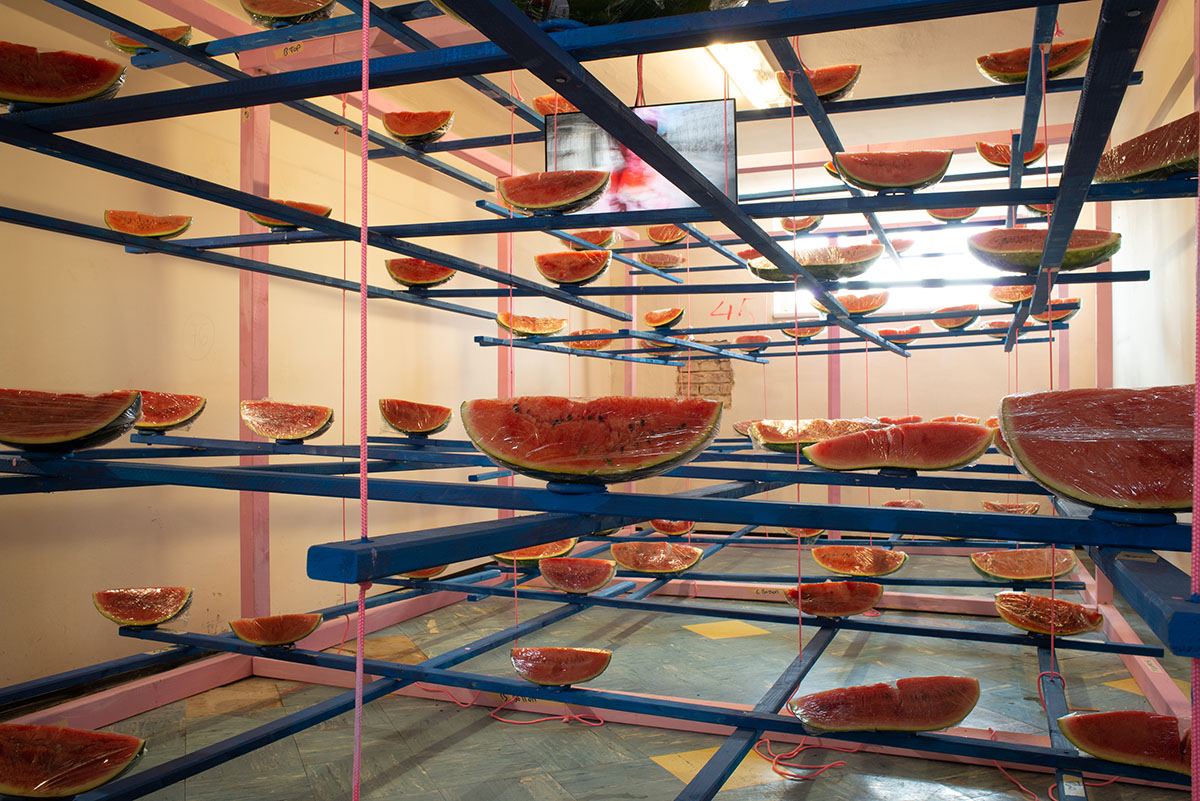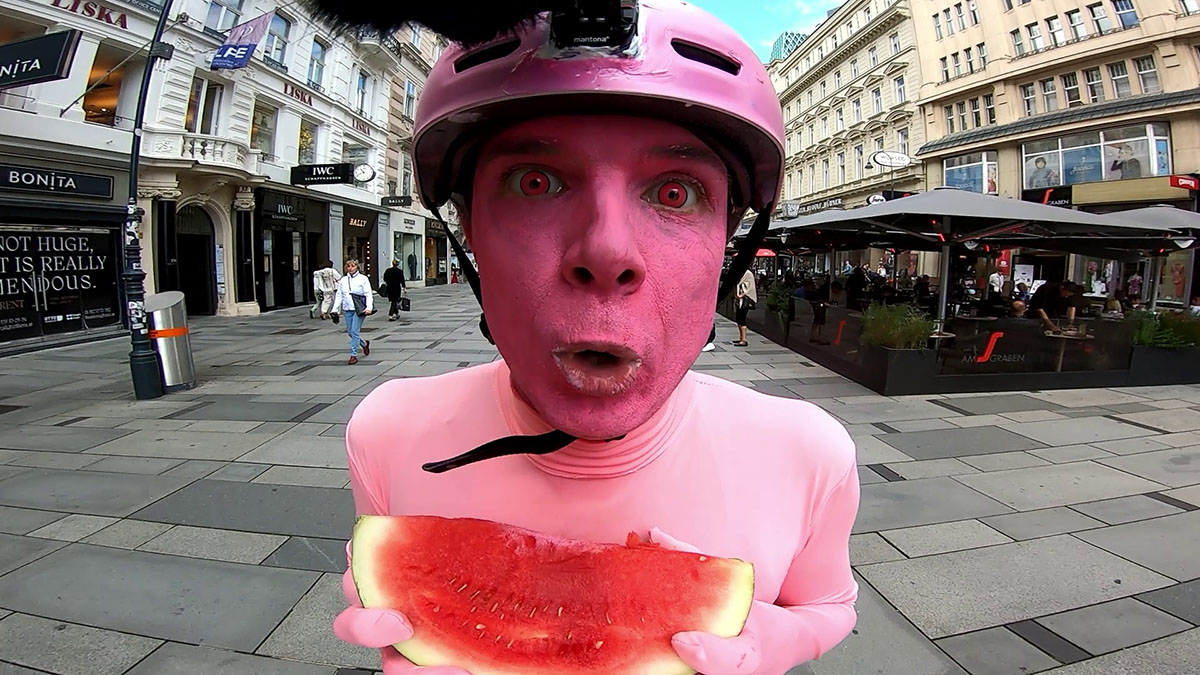
If in Vienna Walk Brus called himself a ‘living painting’, then Felix Helmut Wagner could have identified with ‘living buffoonery’. The video documentation of his performative stroll around the city centre of Vienna became the main part of the project, which was realised as a site-specific installation for the PARALLEL art fair.
A strange creature in a baby pink overall and cakey painted face, with an action camera fixed on their helmet, is running along the streets and obsessively repeating aloud: “People look at Melons. Melons don’t look at people”. With a slice of watermelon in their hands, the protagonist is not only fixed on the idea of fruits’ indifference, but seems to be deeply touched, even if not traumatized by it. Their whimsical attire may associate with The Man in Pink, from Monty Python’s sketch The Meaning of Life – living in a fridge and dressed in a pink tuxedo, he sings the Galaxy Song about how small and insignificant human being is within the Universe. Wagner creates his own version of a pink agent of wisdom, with disoriented red eyes and a mission to spread the word about melons’ disinterest in people. Yet it appears that artist’s character seeks to deliver the same message as his imaginary counterpart – humanity is irrelevant to many, many things and entities.

Speaking has an important role in Wagner’s artistic work, although it isn’t necessary connected with communication. He considers speech act as performance per se and researches the very vocal labour of articulation to be performative practice. A monologue, dialogue or discussion arises in Wagner’s projects out of intention to demonstrate its creative capacity – the artist would be speaking uninterrupted to reveal how spontaneously an artwork can emerge within the flux of utterances. And vice versa, speaking becomes a catalyst for performing. The mechanics of this interaction is described In Difference and repetition: Deleuze addresses the situation of actors speaking and simultaneously hearing their voices estranged, as if they were voices of the Others – the extraordinary ambiguity of being simultaneously oneself and the Other stimulates the performance further and facilitates the event. In that way, the repetition of one phrase in People look at Melons. Melons don’t look at people may be also seen as a way of becoming that odd pink Other.

Essentially, performing the Other is Wagner’s artistic method. The artist develops it towards buffoonery or farce by bringing together body transformation and humour. Like for example in his project Genesis and Development of An Artistic Fact (2020/21) for which he staged and documented self-hanging in different outfits and masks. There the idea of playing the Other is manifested to belong with grotesque mockery of the Self and caricature violence over his own body; so that by comically dismissing the seriousness about himself, the artist can navigate into diverse potentialities of performing the Other. In People look at Melons. Melons don’t look at people, Wagner keeps with eccentric disguise, but moves the action to the public space where he exposes his protagonist to routine and normality of the everyday life. The outsider, they reveal intensity of being within the alien environment. Coming back again to Wiener Spaziergang, Günter Brus took his painted body out of the atelier direct to the streets for disrupting the narrative of art existing somewhere on a periphery of life problems. Wagner does it for showing that Otherness can be performed as an art performance and thus be embraced at that moment.

The installation People look at Melons. Melons don’t look at people was displayed in a small room on the top floor of the former gynaecological clinic which had become a venue for the Parallel art fair in 2021. A constructed grid of blue and pink bars supported cut open and wrapped in plastic foil watermelons. In the middle there was a TV-screen with the documentation of the performance. Approaching Wagner’s project, one would first smell a sweet sourness of warmly stored fruits, then hear an alarmed voice repeating the phrase and then peep through an open door into a packed room. One would stand there intoxicated with bad juices dripping on the floor and spell bounded by the looped video documentation.
However, it might be all just a quatsch too, an absurd but delicious piece of nonsense. A performance coming out of brilliant performing coming out of a crazy idea coming out of irrational somewhere. And it wouldn’t be any worse then. On the contrary, it would be an indulgence in marvelous foolishness which as vital for art as insight and experiment.
Felix Helmut Wagner – www.felixhelmutwagner.com
About the writer: Liudmila Kirsanova is an independent curator and writer, whose research is focused on autofictions, storytelling, and politics of belonging. In 2019 she became the finalist of the curatorial award Bonniers Konsthall, Stockholm. Curating international and domestic projects, Kirsanova has been advocating and promoting female artists, in particular those from non-Western cultures.





